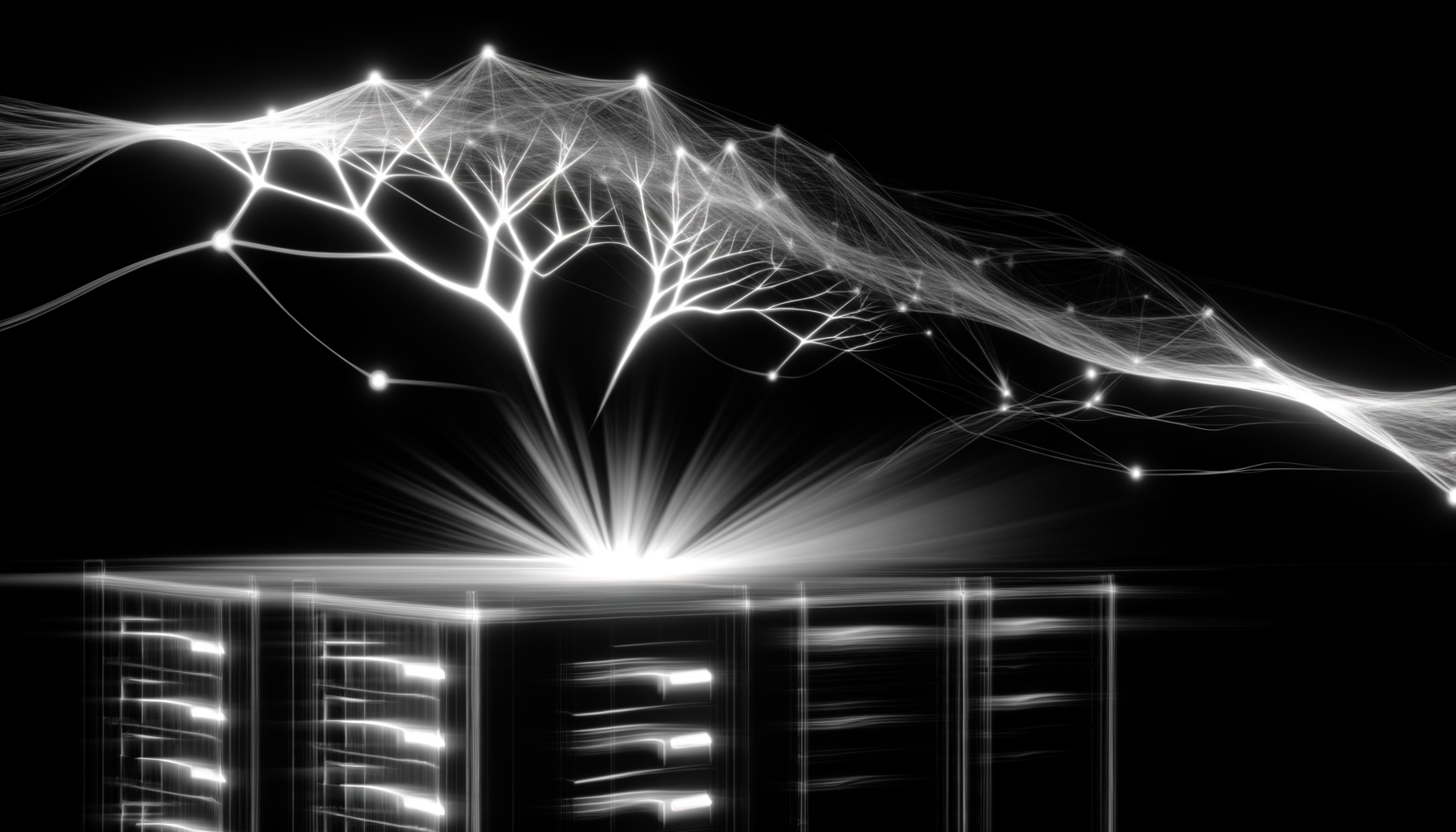AI-empowered hackers are launching DDoS barrages that mutate in seconds, outwitting defenses designed for yesterday’s attacks. What’s the real cost when your AI infrastructure faces an opponent that thinks, predicts—and never sleeps?
AI Meets DDoS: The Nightmare Scenario Arrives
For years, security teams have played a cat-and-mouse game with DDoS attacks. Automated scripts, botnets, volumetric surges—familiar foes met by tried-and-tested defenses. That era is over. Today, cybercriminals are leveraging Artificial Intelligence not only as a tool for spreading attacks but for orchestrating adaptive, relentless DDoS campaigns targeting the very backbone of digital innovation: AI infrastructure itself.
The Threat Level: Unprecedented Speed, Agility, and Destruction
AI-driven DDoS systems assess defenses in real time, probing network perimeters, sensing throttling rules, learning from their own failures, and morphing traffic patterns with sub-second precision. This isn’t conjecture—it’s already happening, and the sophistication escalates monthly.
- Dynamic Polymorphism: Attack vectors shape-shift as soon as mitigation rules deploy, evading rate-limiters and filters by mimicking legitimate user behavior.
- Intelligent Target Selection: AI models analyze infrastructure maps, selecting weak points and sequencing multi-stage attacks that overload critical nodes—often going undetected until service disruption is irreversible.
- Evolution Through Adversarial Feedback: Each defensive move by the victim feeds the attacker’s ML model, tightening the feedback loop and creating an arms race of adaptation.
Are you ready for a cyber opponent that debugs your defenses while it’s attacking?
Some recent cases show attackers dynamically splitting traffic across cloud endpoints and edge nodes, surging attack intensities when anomalies slip under detection thresholds—then vanishing and reappearing elsewhere in the infrastructure seconds later. These patterns are algorithmically generated, not manually orchestrated, setting a pace of escalation humans simply can’t match unaided.
Why AI Infrastructure Is the Prize
With enterprise dependency on AI models surging, uptime and integrity of AI infrastructure have become existential. GPT-class models, real-time vision inference, enterprise search, and generative platforms operate under strict latency budgets and enormous data transfer. What happens when those networks are flooded, their models starved of data, interrupted mid-training, or forced to mis-route inference workloads?
- Unplanned downtime triggers cascading failures through dependent enterprise systems.
- Model performance degrades unpredictably, eroding trust in AI-enabled products.
- Data streams may be corrupted or lost in the crush of bogus traffic.
- API gateways buckle under thousands of requests per second, even when traffic is statistically ‘normal’—because the botnet has learned to look normal.
For AI platform providers, it’s more than a technical cost—it’s damage to brand, customer loyalty, investor trust, and long-tail competitive advantage.
The Defensive Playbook Is Obsolete
Traditional DDoS mitigation relies on thresholding, pattern-matching, and block lists. Set a rule, observe anomaly, block offending range, escalate to upstream blackholing if needed. But what happens when the attack toolchain itself is smarter than your playbook?
- Signature-based rules fail against generative attack traffic that never repeats.
- Blacklisting is pointless when a botnet is elastic, distributed, and coordinated by AI that switches hosts and protocols on the fly.
- Manual intervention can’t keep up when attack surfaces mutate every few milliseconds.
Let’s be clear: AI DDoS attacks are adversarial learning in action—the longer you play, the better your opponent becomes.
Inside the Attack: Anatomy of AI-Driven DDoS
Modern AI-powered attackers employ reinforcement learning, adversarial networks, and deep behavioral mimicry to fine-tune every assault. Here’s how a typical campaign unfolds:
- Reconnaissance in Hyper-Speed: The AI scans network topology, mapping endpoints, API versions, and time-based throttles with uncanny speed.
- Adversarial Experimentation: Small-scale probes test for response latencies and countermeasures, feeding results back to refine attack vectors.
- Swarm Coordination: The attack is deployed across a massively distributed, AI-orchestrated botnet. Traffic patterns vary per node—randomized enough to evade anomaly detection, yet coordinated to maximize impact.
- Automated Adaptation: As defenses trigger, the model pivots: shifting protocols, simulating user journeys, changing the attack surface, or even pausing briefly to reset detection thresholds.
- Blind Spot Exploitation: The system identifies and hammers points where monitoring tools are weakest, often leveraging time-of-day or region-specific vulnerabilities.
Case: Attacks Targeting AI APIs
API endpoints—especially for LLM inference or machine learning model serving—are prime targets. Instead of high-volume, crude bursts, adversaries now deploy requests that mimic normal user or batch interactions, leveraging AI to adapt payload structure in real time. These requests slip by rate-limiters and generate spiraling compute costs, all while delaying or degrading genuine usage. It’s no longer about bandwidth, but system integrity and cost sabotage.
Where Defenses Fail—and Must Evolve
AI-enabled attackers don’t just aim for downtime; they probe for inefficiencies. Distributed attacks can force cloud scaling events, incurring massive, untraceable costs. Monitoring tools drown in plausible but phony logs. And when the system adapts? So does the threat.
Three critical failings of legacy approaches:
- Static Defenses: Fixed rules cannot anticipate an AI that learns, reroutes, and generates infinite new patterns.
- Human-in-the-Loop Response: Manual triage gets outpaced, as AI attackers cycle through thousands of strategies before an incident even escalates.
- Lack of Contextual Awareness: Most security tooling isolates surface data, blind to the intent and coordination hiding in traffic correlations only an AI could recognize.
Coping Strategies: Meeting AI Fire with AI Defense
Confronted by an adaptive enemy, response requires an equally adaptive defense. The solution isn’t static pattern-matching—it’s real-time, context-aware AI and human expertise in tandem.
What an Effective AI-Driven DDoS Defense Demands Now
- Behavioral Analytics at Scale: Defense systems must analyze not just packet volume, but intent patterns—machine learning to flag user journeys that deviate from authentic history, correlating traffic across vectors in real time.
- Automated, Adaptive Rule-Generation: AI defenders should continuously refine signatures and mitigation logic in response to new attack discoveries, reducing the time-to-containment from hours to seconds.
- Cross-Layer Intelligence: Correlate data across network, application, and user-behavior layers, identifying attack campaigns that blend volumetric and protocol-layer sabotage.
- Deception and Moving Target Defenses: Proactively confound attackers with shifting endpoints, obfuscation, and honeypots trained to lure and expose adaptive DDoS bots for forensic analysis.
- Collaborative Threat Intelligence: Real-time information sharing between infrastructure providers and AI vendors is critical—detected tactics in one system must inform all participants, machine-to-machine.
In this new era, your best defense isn’t ‘stronger walls’—it’s an intelligent adversary that works for you, not against you.
Strategic Implications for Leaders in AI Infrastructure
If you think your exposure is only technical, think again. Regulatory scrutiny is growing, and clients increasingly demand proof that you can ensure uptime even under attack. As AI DDoS campaigns mature, targets won’t just be Fortune 500s—they’ll be AI labs, health tech, finance, defense, any node in the value chain that depends on AI infrastructure.
- Expect insurance premiums and cyber guarantees to hinge on your AI-run defense maturity.
- Customers may demand real-time attack transparency—and switch providers after a single incident.
- AI system architects need to design models with defensive resilience, not just performance, at their core.
First Actions for the C-Suite
1. Audit your infrastructure for ‘AI fitness’: Are your current DDoS defenses leveraging AI and machine learning, or are you still relying on static playbooks from five years ago?
2. Stress-test your AI systems against simulated, adaptive DDoS scenarios: Instead of standard tabletop exercises, deploy red-teaming with live adversarial ML tactics.
3. Invest in next-gen talent and platforms: Hire security professionals versed in AI adversarial analysis and establish partnerships with vendors building adaptive, co-evolving DDoS response tech.
4. Build incident transparency into your client-facing communications: Own the narrative, don’t let a breach write it for you.
The Road Ahead: Adapt, or Accept the Risk
The adversary has evolved. Your security stack must too. The AI-infused threatscape is no longer just about bandwidth and botnets—it’s about real-time adaptation, targeted disruption, and the weaponization of AI itself against its own creators. Those who admit the risk and adapt their strategy—combining behavioral ML, automated defenses, forensic depth, and transparent response—will survive. Those who don’t may find themselves not just outpaced, but outclassed, in the next cybersecurity crisis.
The age of AI-powered DDoS warfare is here—survival belongs to those whose defenses learn and adapt as fast as the threat itself.





